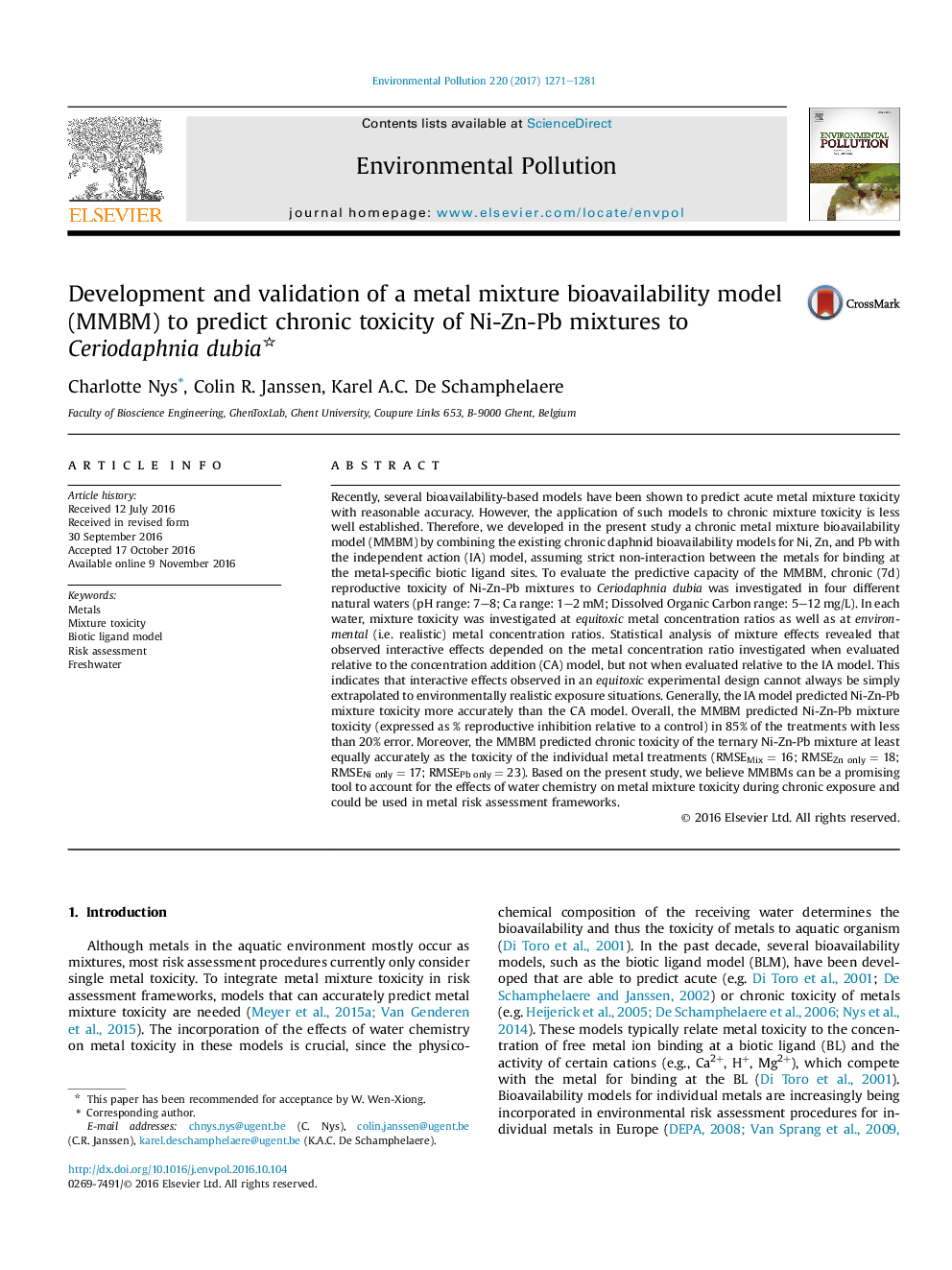| کد مقاله | کد نشریه | سال انتشار | مقاله انگلیسی | نسخه تمام متن |
|---|---|---|---|---|
| 5749557 | 1619153 | 2017 | 11 صفحه PDF | دانلود رایگان |

- Chronic Ni-Zn-Pb toxicity to C. dubia is most accurately predicted by the independent action model.
- The concentration addition model results in the most conservative predictions.
- Interactive effects are dependent on the metal concentration ratio investigated.
- A metal mixture bioavailability model (MMBM) for chronic toxicity was developed.
- The MMBM can account for the effects of water chemistry on Ni-Zn-Pb mixture toxicity.
Recently, several bioavailability-based models have been shown to predict acute metal mixture toxicity with reasonable accuracy. However, the application of such models to chronic mixture toxicity is less well established. Therefore, we developed in the present study a chronic metal mixture bioavailability model (MMBM) by combining the existing chronic daphnid bioavailability models for Ni, Zn, and Pb with the independent action (IA) model, assuming strict non-interaction between the metals for binding at the metal-specific biotic ligand sites. To evaluate the predictive capacity of the MMBM, chronic (7d) reproductive toxicity of Ni-Zn-Pb mixtures to Ceriodaphnia dubia was investigated in four different natural waters (pH range: 7-8; Ca range: 1-2 mM; Dissolved Organic Carbon range: 5-12 mg/L). In each water, mixture toxicity was investigated at equitoxic metal concentration ratios as well as at environmental (i.e. realistic) metal concentration ratios. Statistical analysis of mixture effects revealed that observed interactive effects depended on the metal concentration ratio investigated when evaluated relative to the concentration addition (CA) model, but not when evaluated relative to the IA model. This indicates that interactive effects observed in an equitoxic experimental design cannot always be simply extrapolated to environmentally realistic exposure situations. Generally, the IA model predicted Ni-Zn-Pb mixture toxicity more accurately than the CA model. Overall, the MMBM predicted Ni-Zn-Pb mixture toxicity (expressed as % reproductive inhibition relative to a control) in 85% of the treatments with less than 20% error. Moreover, the MMBM predicted chronic toxicity of the ternary Ni-Zn-Pb mixture at least equally accurately as the toxicity of the individual metal treatments (RMSEMix = 16; RMSEZn only = 18; RMSENi only = 17; RMSEPb only = 23). Based on the present study, we believe MMBMs can be a promising tool to account for the effects of water chemistry on metal mixture toxicity during chronic exposure and could be used in metal risk assessment frameworks.
184
Journal: Environmental Pollution - Volume 220, Part B, January 2017, Pages 1271-1281